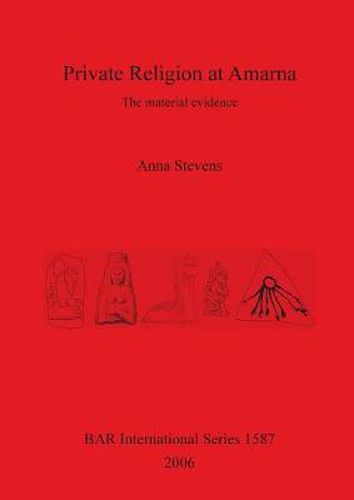Readings Newsletter
Become a Readings Member to make your shopping experience even easier.
Sign in or sign up for free!
You’re not far away from qualifying for FREE standard shipping within Australia
You’ve qualified for FREE standard shipping within Australia
The cart is loading…






This title is printed to order. This book may have been self-published. If so, we cannot guarantee the quality of the content. In the main most books will have gone through the editing process however some may not. We therefore suggest that you be aware of this before ordering this book. If in doubt check either the author or publisher’s details as we are unable to accept any returns unless they are faulty. Please contact us if you have any questions.
In this study the author approaches the realm of ‘private religion’ in Egypt some 3,300 years ago. The two broad research questions that frame this study are: What was the structure of the private religious landscape at Amarna (Central Egypt, on the Nile), and what were the ideas that shaped this landscape? The starting point is a corpus of objects and structures from settlement remains at one site, Amarna, the location of Egypt’s capital for a brief period (c.350 - 330 BCE) towards the end of the Eighteenth Dynasty. At the height of its occupation, Amarna was the administrative, political and religious centre of Egypt. (Estimates of the city ‘s population at this time range between 20,000 and 50,000 people.) This publication is divided into three parts.Part I places the study in context. The history of the Amarna period, the layout of the site and its excavation history are summarized. Part 2 explores the issue of how to define private religion and identify its material remnants: the inventory of the material evidence - objects, architectural emplacements and buildings. It is hoped that the dissemination of this material will assist others researching similar topics, making available unpublished evidence from most of the main phases of excavation at the site. Part 3 explores the design, manufacture and acquisition of the material components of religion, and considers the forms of the conduct in which they were used. Also examined are the transcendental forces involved: the royal family and Aten, and 'traditional ’ deities and spirits, including private ancestors. Part 3 also considers the shape of the religious cityscape, and the questions of who was participating in religion, and what was done with the material when it was no longer in use. The study concludes with a discussion of the motivating factors that underlay religious conduct, and which open a small window onto the ideas that shaped the religious landscape more broadly.
$9.00 standard shipping within Australia
FREE standard shipping within Australia for orders over $100.00
Express & International shipping calculated at checkout
This title is printed to order. This book may have been self-published. If so, we cannot guarantee the quality of the content. In the main most books will have gone through the editing process however some may not. We therefore suggest that you be aware of this before ordering this book. If in doubt check either the author or publisher’s details as we are unable to accept any returns unless they are faulty. Please contact us if you have any questions.
In this study the author approaches the realm of ‘private religion’ in Egypt some 3,300 years ago. The two broad research questions that frame this study are: What was the structure of the private religious landscape at Amarna (Central Egypt, on the Nile), and what were the ideas that shaped this landscape? The starting point is a corpus of objects and structures from settlement remains at one site, Amarna, the location of Egypt’s capital for a brief period (c.350 - 330 BCE) towards the end of the Eighteenth Dynasty. At the height of its occupation, Amarna was the administrative, political and religious centre of Egypt. (Estimates of the city ‘s population at this time range between 20,000 and 50,000 people.) This publication is divided into three parts.Part I places the study in context. The history of the Amarna period, the layout of the site and its excavation history are summarized. Part 2 explores the issue of how to define private religion and identify its material remnants: the inventory of the material evidence - objects, architectural emplacements and buildings. It is hoped that the dissemination of this material will assist others researching similar topics, making available unpublished evidence from most of the main phases of excavation at the site. Part 3 explores the design, manufacture and acquisition of the material components of religion, and considers the forms of the conduct in which they were used. Also examined are the transcendental forces involved: the royal family and Aten, and 'traditional ’ deities and spirits, including private ancestors. Part 3 also considers the shape of the religious cityscape, and the questions of who was participating in religion, and what was done with the material when it was no longer in use. The study concludes with a discussion of the motivating factors that underlay religious conduct, and which open a small window onto the ideas that shaped the religious landscape more broadly.